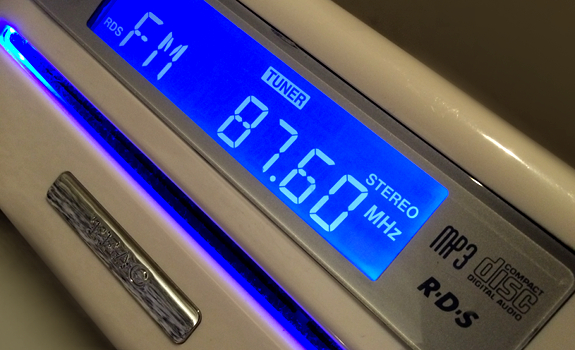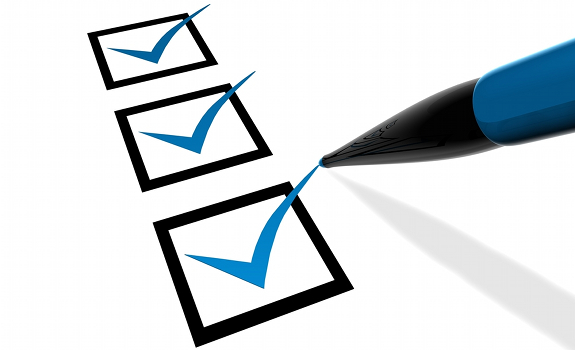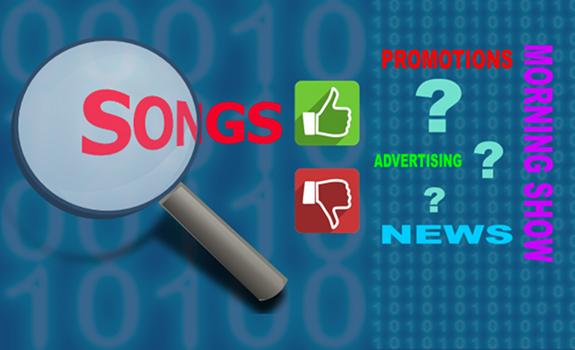A positive atmosphere during your auditorium music test is just as relevant for a good result as reliable data, radio researcher Stephen Ryan writes.
Following part 1 of this article on best practices for auditorium music testing (where we spoke about How To Make Your Auditorium Music Test Count), let’s talk about preparing and conducting your session so that you’ll get the most out of your auditorium music test in order to find the heavyweight champions that make listeners gravitate towards your station!
‘As part of the recruitment filters, consider asking a Time Spent Listening question’

Auditorium music test attendees should be regular radio listeners without exception (photo: Thomas Giger)
Consider outsourcing your fieldwork
Having decided on a number of potential sample sizes and sample composition, it is time to commission a fieldwork company. It is worth to ask several companies for quotations, as you may be surprised by the variance between them. Established local companies and international research companies with a local office can provide the advantage of large databases, which allow for targeted recruitment calls rather than purely random sampling. It can significantly reduce the recruitment cost for your AMT session.
 Recruit fresh survey respondents
Recruit fresh survey respondents
There is one important thing when you’re drawing from an existing database. You want to always avoid using semi-professional respondents, who have been survey participants recently. It’s worthwhile making a stipulation that no respondent has been used in any survey in the last 3 months, and that no participant has been used in radio- or music-based research in the last 6 months.
Use registration for double-checking
Consider how you will conduct the auditorium music test, and who is responsible for managing the event. Your fieldwork company should appoint staff that can welcome, register and (most importantly) revalidate the attendees during the evening, as you have paid them to find respondents that are meeting your criteria. Registration on the night is a final chance to check and ensure your AMT has the right participants. As part of the recruitment filters, you should consider asking a Time Spent Listening question to ensure you don’t end up with light listeners to radio. Consider to set a minimum of 1 hour of listening per day.
‘Your music test is not supposed to be an endurance test’
Think about cash alternatives
One additional cost is the incentive paid to each attendee on completion of the auditorium music test. Cash works, but a replacement (like vouchers for a shopping mall) may be more practical. You can establish a barter deal with advertisers to provide vouchers or products (like quality beauty products for females) as incentive. The appropriate cash amount or perceived value depends on your local economy. An AMT testing 600 songs should take you 2 to 2.5 hours to complete, including breaks. While you can use the average local hourly working wage as reference, you may want to be more generous.
 Keep your session entertaining
Keep your session entertaining
In smaller economies, an auditorium music test cash incentive should have a value of € 20 to € 25. In larger markets, financial compensation may rise to € 50 to € 60. To make it a fun night, you’ll probably also give away some spot prizes that have a desirability factor and are of reasonable value. About 6 of these prizes are usually enough, and they can be awarded in 2 or 3 stages during the evening.
Be a great host
The auditorium can encompass all sorts of venues, from hotel conference rooms to local village halls. Just ensure that the environment is clean and comfortable to use, and that the location is safe and easy to access, also with public transportation. Comfort is key, as your music test is not supposed to be an endurance test! A hotel conference room is usually the best option. Remember that the better you treat your respondents, the more they remain fully engaged during your entire AMT session.
‘Keep your perceptional questions to a minimum’
Treat perceptual questions carefully
Whether you use a diary or dials, you need an effective and well-designed questionnaire. With a room full of listeners, it’s tempting to ask them how they feel about your brand, how they see you radio station, what they think about your morning show, and so on. Keep your perceptional questions to a minimum, as your auditorium music test is about rating your songs. Also remember that answers to perceptional questions are skewed to your audience (as everyone in the room listens to you at least once a week, and half of these people are your most loyal music fans). You are always talking to converted listeners, so be conscious about what you ask, and about how you interpret the answers.
 Stay within reasonable limits
Stay within reasonable limits
So how many songs should you include in your auditorium music test? You want to test no more than 600 songs, which can be concluded in 2.5 hours. At this point, the attendee’s tolerance and attention will decline. Because you are testing only established songs in an AMT, the ‘unfamiliar’ score should not be an issue. If you do see a lot of high ‘unfamiliar’ scores in your analysis, those songs should not have been included.
Use a 6-point scale
If you are hiring a consultant, the multiple-choice scale for rating songs will vary according to their requirements. Here’s a 6-point scale, where you include 6 possible answers for rating songs:
- This song is one of my favorites (Favorite)
- I like this song (Like)
- This song is okay (Neutral)
- I used to like this song, but now I’m tired of it (Burn)
- I don’t like this song and I never have (Negative)
- I don’t know this song (Unfamiliar)
‘Only test established and well-known songs’

Focus on songs you’re depending on (or recently have depended on) to maintain your audience (photo: YouTube)
Test active & familiar songs
Spend enough time on creating your auditorium music test list of 600 songs or less. First, include all heavy-rotation songs from your active playlist. If you have a category for new music or categories for lower or medium rotation songs (that are not really established yet), don’t include those titles – only test established and well-known music. Your active universe is the music playlist you have been depending on to maintain your audience. You want to know the status of each of those songs, and its place in the music hierarchy, thus defining which of these songs are the true heavyweight champions on your station. After including all really familiar active songs, you know how many other songs you can test.
 Include additional song titles
Include additional song titles
First, look for songs that you have rested, but have played a lot before on a high or reasonably high rotation (i.e. songs you have previously relied on to attract your audience). Then, if you still have space, look at heritage songs that you may not have played, but that would still fit your format. If you have access to a playlist monitoring service, look for heritage songs that your competitors play or have played on a significant rotation.
Ensure enough playback variety
Once your AMT playlist is complete, put all songs in a random order, and ensure enough artist and genre separation to avoid repetition and bunching. Pretend you’re scheduling a regular music log, with an emphasis on variety. No matter how you will record and play your songs during the night, you can never be too careful and have too much backups! A lot of time, effort and money went into gathering these people in a room to rate these songs. If, for whatever reason, you can’t play them the audio, the whole thing would be a waste of your time and money. A second player or laptop as a backup, with the same audio files ready to play, is well worth the investment.
‘Carefully follow the song list’

For accurate research results, every tested song should receive the actual audience ratings (image: stock image)
Conduct a ‘blind test’
One person can make a real difference for your auditorium music test, and that is your moderator. While this person needs to be confident and knowledgeable about the proceedings, he or she also needs to have charm, charisma and personality. The evening should remain fun for everyone, so your moderator should not come across as an exam supervisor… You cannot use any of your on-air personalities, as you want ensure a blind test environment (to guarantee that your respondents will give authentic answers, and are not attempting to please you, because you are their favorite station for music).
 Choose the right moderator
Choose the right moderator
As you don’t want a well-known moderator, look for someone on your staff who fits the requirements, but is unknown to the audience. If the fieldwork company offers you a candidate, always meet them before the session date to ensure that they actually have a personality. A lot of the instructions given at an AMT are very procedural. How these are delivered, can make a real difference.
Check the playback order
The program director and music director should always attend the evening, unless they are also on-air personalities, who would be familiar to the attendees. Someone who knows all of the music that’s being tested should carefully follow the song list, and ensure that each hook is played in the exact right order according to the list. This responsible and accurate person should make note of any errors, and reconcile the list before all of these data will be processed and analyzed. How to do that, is explained in part 3 of this article on how to conduct a successful auditorium music test.
This is a guest post by Stephen Ryan of Ryan Research, edited by Radio))) ILOVEIT | Part 1 | Part 3







Add Your Comment